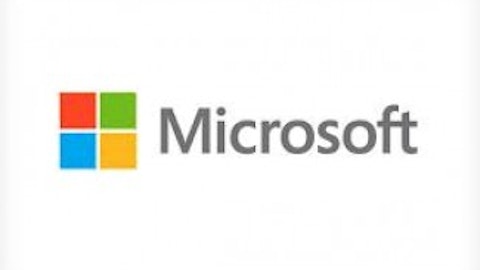
But hardware strategy aside, both Windows and Mac OS are PC operating systems, and are for the most part just slightly different takes on the same need.
Yet when it comes to their view on tablets, Microsoft Corporation (NASDAQ:MSFT) and Apple couldn’t be more different. Although Apple continues to be the largest single player in the tablet market, Microsoft Corporation (NASDAQ:MSFT) believes there’s a weakness in Apple Inc. (NASDAQ:AAPL)’s strategy — one that it can exploit to continue its PC dominance.
What’s the difference between PCs and Mobile Devices?
The philosophical difference between the two companies stems largely from the dividing line between what constitutes a mobile device, and what constitutes a PC. Both companies agree that these are different markets, but they choose to draw the line in different spots.
Apple, for example, sees a PC market that includes traditional laptop and desktop computers, and a mobile market that’s dominated by smartphones and tablets.
In Apple Inc. (NASDAQ:AAPL)’s world, mobile devices have touch screens 10-inches or less, run ARM processors, and use the iOS operating system. Traditional PCs, on the other hand, sport screens 11-inches or larger, use Intel Corporation (NASDAQ:INTC) chips, and run Mac OS X.
Microsoft takes a completely different view. Microsoft Corporation (NASDAQ:MSFT)’s CEO Steve Ballmer once explained the company’s philosophy in an interview with The Wall Street Journal’s Walt Mossberg:
“I think PCs are going to continue to shift in form factor. PCs will look different next year, year after, year after that…The real question is what’s a PC?…I think there will exist a general purpose device that does everything you want…I don’t think the whole world is going to be able to afford five devices per person…With that said, will there also be a device that you keep in your pocket?…I think there’s a fundamental difference between small enough to be in a pocket — not small enough to be in your pocket. There will be some distinct differences in usage patterns between those two devices.”
In short, the line Microsoft draws might be dubbed the “pocket test” — if it can fit in a pocket, it’s a mobile device. If it it can’t, it’s a PC.
Windows 8 and Windows Phone
From there, Microsoft’s operating system strategy takes shape. Smartphones run Windows Phone 8, anything bigger (including tablets and traditional PCs) runs Windows 8.
Of course, this strategy has its drawbacks. Windows 8 comes bundled with the Metro interface — the start screen of tiled icons. Metro is necessary to make Windows 8 work on tablets, but it’s annoying and potentially confusing to traditional PC users. Most of the complaints concerning Windows 8 have stemmed from Metro.
Microsoft Corporation (NASDAQ:MSFT) appears to recognize that it’s made a mistake. Windows Blue, the upcoming patch to Windows 8, will reportedly allow users to disable Metro and boot directly to the desktop.
All-in-one
Apple Inc. (NASDAQ:AAPL) loves all-in-one machines. Its desktop Mac popularized the concept of having a computer’s internals be bundled with its monitor.
But Microsoft views all-in-one a bit differently. Specifically, Microsoft believes in creating the all-in-one device — a device that can fully satisfy all of a user’s computing needs. The embodiment of this belief is the Surface Pro.
I’ve called the Surface Pro the most important device for the future of Microsoft. That’s because if it fails, it will demonstrate that Microsoft Corporation (NASDAQ:MSFT) has it all wrong when it comes to PCs.
Theoretically, the Surface Pro can function as a user’s sole computing device. While it has the portability and form factor of a tablet, it is just as powerful as most laptops, and can be docked to a monitor, keyboard, and mouse to serve as a desktop replacement, or combined with a keyboard cover to function like a laptop.
Tim Cook’s toaster-refrigerator
But the all-in-one device isn’t without its trade-offs The Surface Pro has poor battery life compared to pure tablets, and is thicker and heavier. At the same time, it’s significantly more expensive than comparable powerful laptops.
